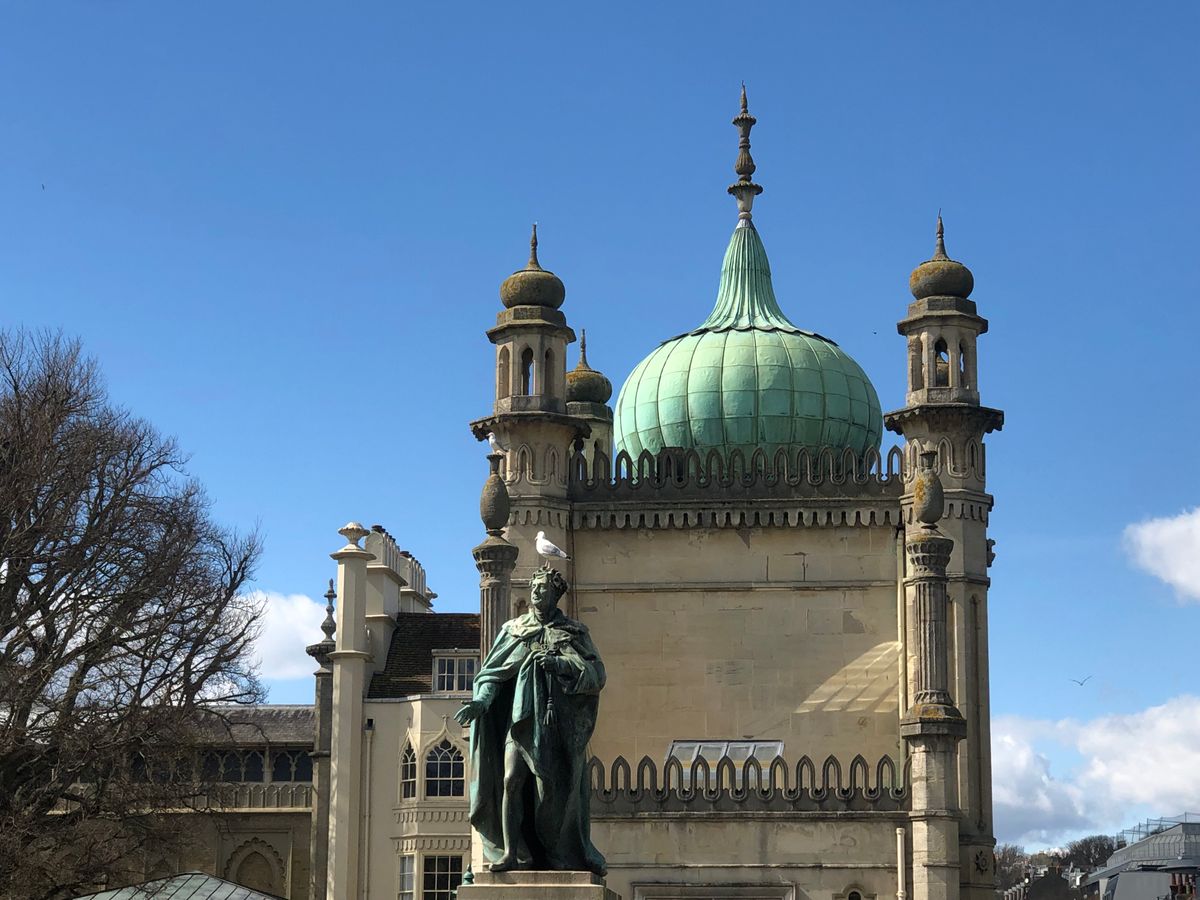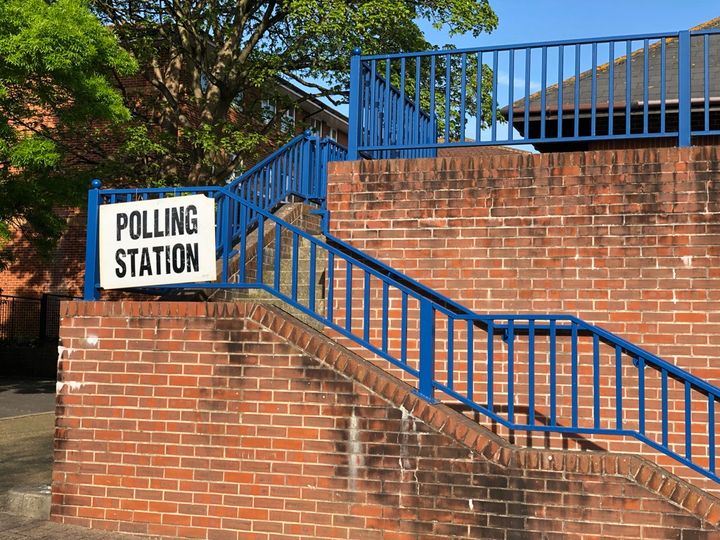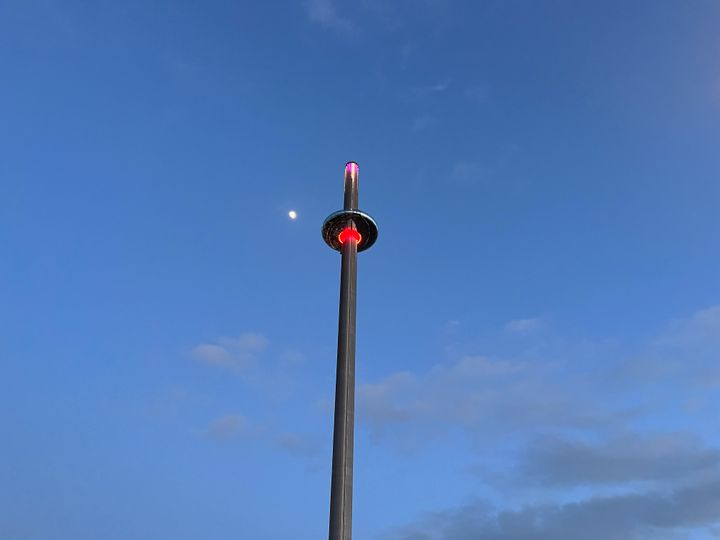A Party Fit for a King
Brighton and Hove has a unique, if ambivalent, relationship with the British Monarchy. We look at how the coronation of our city’s most infamous royal proponent contrasts with Charles III’s own crowning.

The bitter rift between the Prince and Princess of Wales divided the nation, writes Ross Othen-Reeves. Despite both parties allegedly having extramarital affairs, it was the decades-long romance between the prince and his infamous mistress that the public most disapproved of. The princess meanwhile proved vastly more popular with the public than her husband throughout her lifetime. The acrimonious ending of the couple’s relationship had long-lasting ripple effects, ultimately leading to complications and sensitivities in the King’s coronation arrangements.
Charles and Diana? Try again. George IV and Caroline of Brunswick at the turn of the 18th and 19th centuries. But you could be forgiven for making the mistake. Some of the parallels between these sequences of events seem uncanny.
Then again, scandals and public division over the royals have always existed. Not least around the time of coronations, when the spotlight is cast onto their personal lives, wealth, and civic value, all with heightened intensity.
Brighton and Hove has a particularly ambivalent relationship with the monarchy. With our left-leaning credentials, it’s taken something as a given that our city is not ‘particularly over-stuffed with royalists’, as one Labour Councillor put it to her Conservative counterparts in a recent debate over how to mark the coronation.
Yet over the centuries, many royals have loved the city, and being not completely immune to fame and flattery, we seemingly loved them back. Most notably in how we celebrated their coronations. And party is a party, after all.
Of all the kings (and it has largely just been kings—neither Victoria nor Elizabeth II embraced our city with quite the same gusto), it is the ostentatious, hedonistic George IV who is most closely associated with Brighton and Hove. As Prince Regent, George lent his title to the Regency architectural style which the city is so loved for. Yet it is the Royal Pavilion which is arguably George’s most enduring legacy, and which best reflects his personality; rule-breaking, flamboyant, and somewhat ridiculous.
His coronation was no different. In fact, it was a Prinny (as was his nickname) party on steroids. This dramatic affair is now the focus of the Royal Pavilion’s exhibition: A Right Royal Spectacle: The Coronation of George IV, which has been timed to coincide with Charles III’s own celebrations.
Its curator, Professor Alexandra Loske, guided me through the exhibition, adding additional context to the already fascinating, and at times—genuinely jaw-dropping—details offered up by the artefacts and labels themselves.
The scale of the ceremony was outlandish for one thing, as Loske explained:
He wanted to outshine the French Bourbon Kings and Napoleon’s coronation. He wanted to do it bigger, and better, and more glamorous than anyone else.
He nailed it. Held in July 1821, George’s ceremony was, and by many estimates, remains, the most expensive and extravagant in British history. The procession alone (discounting military personnel) was made up of 700 people—or more specifically—693 men and a mere seven women (the dress of one of these Royal Herbstrewers has miraculously survived and now features in the exhibition).
This excess was of course mirrored by its price tag, and much like Charles’ coronation today, costs were covered by the taxpayer, inviting heated debate as a result. Not least given the king’s dire approval ratings with the public. Though in Brighton itself George’s popularity remained higher than average thanks to his patronage of the city, where locals celebrated over several days with cultural events, fireworks and a procession which sounds not too dissimilar in style to our annual Pride Parades today.
George’s infamous financial levity was overshadowed by an even greater controversy, however. Ahead of the coronation, he dragged his estranged and embittered wife, Caroline, through a high-profile court case in a desperate attempt to divorce her before being crowned king. He failed, and his unscrupulous tactics left many dismayed.
[…] because he was so desperately unpopular with so many, to then see him treat her quite so badly [...] accuse her of infidelities—something everybody knew he was guilty of himself—and then take her to court to discredit her [was] tragic.
Caroline was no pushover, however. Despite being prohibited from attending the ceremony, she turned up on the day with her supporters, and physically hammered at the doors of Westminster Abbey demanding to be let in as rightful Queen, in what must have been highly dramatic scenes. She was not admitted, but this was likely not her intention anyway, according to Loske:
She didn’t really expect to be let in and crowned. It was symbolic. She had to do this.
Here’s where parallels with the modern day abruptly end. It is unthinkable that such breathtaking theatrics could have occurred at this year’s coronation. No matter what tensions were simmering. Though in one final, if uncomfortable comparison with our own times, Caroline died under what many considered dubious circumstances less than three weeks later, echoing suspicions held by some following the death of the more recent Princess of Wales, Diana, over 175 years later.
The life and death of Diana still haunt the Royal Family to this day, having implications for Charles’ own coronation. The public’s ongoing adoration for her has acted as a counterweight to Charles’ own popularity over the years, and especially that of his once-mistress-now-wife, Camilla. Signified most recently in the controversy over the king’s intention to style her as Queen, rather than use the lesser title of Queen-Consort.
The protracted feud between the royals and the estranged Sussexes, Harry and Meghan, has also hung heavy over coronation festivities, and can also, in many respects, be traced back to one man’s devastation at losing his mother so young.
Sympathetic observers may argue these are private matters. Another view, which arguably resonates more with Brighton and Hove’s politicised, progressive inhabitants, is that these issues distract from the real scandals of the day.
The fact that we’ve recently learned the measure of Charles’ true wealth, estimated at almost £2 billion. Begging the question… Why did the taxpayer pick up the £100 million tab for the ceremony? The argument goes that, as Head of State, the king’s coronation is a state occasion, and so must be paid for by…the state, with over half the costs going towards security.
Then there is the contention over the Koh-i-Noor—one of the largest cut diamonds in the world. Unequalled in prestige, the precious stone is claimed by numerous Asian nations who argue the British Empire wrongfully appropriated it in the 19th century, raising ongoing thorny questions over lingering British imperialism. In an attempt to quieten any consternation, Charles has bucked tradition and removed the Queen Mother’s crown (in which the diamond is embedded) from the ceremony. This would have been worn by Camilla, therefore sparing his wife the predicament of having to wear the most controversial piece of ornamentation in all the proceedings. Though as one of the most controversial figures in the entire event, she may well have welcomed the distraction.
Are these explanations and gestures enough for our city’s famously liberal residents? Arguably not, if social media groups such as the People’s Republic of Brighton and Hove (PRBH) can be trusted as a litmus test. Initially set up as a tongue-in-cheek response to wider Sussex turning Tory in the 2016 local elections, the group’s most recent posts are now a lively stream of serious anti-royal sentiments.
But then the online world is a notoriously unforgiving place. Perhaps a better indicator of local opinion is how the city council has chosen to manage festivities. Which is mostly …not to. Instead opting to act as a facilitator for community-led (and funded) events, rather than organise a programme of activities itself using the public coffers. As Labour Councillor Amanda Evans put it to colleagues:
I just don’t think the city will thank us in the middle of a ‘cost of living crisis’ when people can barely afford to heat their homes or eat half the time.
Labour won the case, and the council’s official celebrations were limited to lighting key public buildings in royal purple and arranging for the coronation to be projected from a big screen in Jubilee Square (and even this was technically funded by central government).
But the community did indeed step up. With over 30 street parties organised for the Saturday, ‘Big Lunches’ and school music bands performing on the Sunday, and the charity group, The Big Help Out, marking the coronation with voluntary events across the city on bank holiday Monday. Signs perhaps that the city is more excited by Charles’ ascent to the throne than some anticipated.
To be sure, this Sunday I ventured to the Regency splendour of Hove’s Adelaide Crescent, where the local community group, the Palmeira and Adelaide Garden Fund, had arranged a ‘big lunch’ on its manicured lawns. Market stalls sat behind lines of long tables filled with British classics, from ham sandwiches to Victoria sponge cake. Union Jack bunting was strewn from the trees, and a brass band entertained the picnickers. Not the most impartial participant group to gauge how the city felt about the coronation perhaps. But even here, in the thick of royal celebrations, opinion was mixed.
One middle-aged man was keen to tell me the coronation had been:
Absolutely tremendous. I’m 100% Royalist and absolutely loved it. God Save the King!
While a young tattooed market-stall seller, who was here simply ‘for the money’, as she confessed with a chuckle, had a strongly opposing view:
I’m anti-royalist. I think most people my age think that way [...] when the economy is in such a bad way [...] I think it’s [the coronation] very bad taste really.
Judith Taylor, the event organiser, acknowledged people were here from across a spectrum:
There are some very ardent monarchists, there’s equally people here who are ardent republicans who’ve come out as part of the community to [...] have a lovely lunch.
In truth, most guests were more likely somewhere in the middle, as one middle-aged woman summarised perfectly:
I’m not a royalist, but not anti-royalist either. Pretty ambivalent really. But it just feels like a nice occasion to get together.
The Garden Party was telling. Less so for what it said of Brighton and Hove’s view of their new king and his coronation, and more for what it tells us about our city itself. Our residents share a laid-back, live-and-let-live attitude, which can no doubt trace its roots at least as far back as the 18th century when Prinny was making the most of our fun-loving town. This natural bent towards inclusivity is what enables people of vastly opposing political views, and everyone in between, to come together for a celebration—even when marred by scandal. A party is a party, after all.




Comments ()